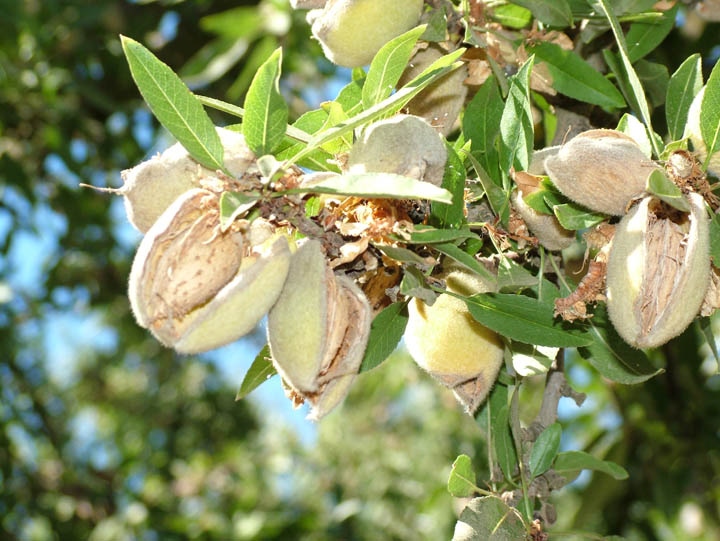
Regulations and costs put pressure on almond growers
Fertilizer costs have more than doubled over the last decade, and regulations on the use of fertilizer will be on the rise soon. Because almonds are California’s third largest crop, and the nuts have a high demand for nitrogen fertilizer, the state’s almond growers are likely to be most affected by both these dynamics.
January 3, 2012

By Gabriele Ludwig, Associate Director, Environmental Affairs; and Bob Curtis, Associate Director, Agricultural Affairs
Fertilizer costs have more than doubled over the last decade, and regulations on the use of fertilizer will be on the rise soon. Because almonds are California’s third largest crop, and the nuts have a high demand for nitrogen fertilizer, the state’s almond growers are likely to be most affected by both these dynamics.
As a result, it is important that growers manage nitrogen fertilizers to minimize impacts to the environment while maximizing crop potential. This three-part series over the next several months will help almond growers better understand the regulatory issues as well as to craft an efficient, cost-effective nitrogen fertilizer management program that has minimum impact on the environment.
UC Davis Pomologist Patrick Brown, leader of a multi-year, multi-disciplinary fertilizer management research project funded by the Almond Board, USDA, and other ag groups, says there is a direct correlation between adequate nitrogen fertilizer and kernel yield in almonds. Proper management, therefore, directly links to the grower’s bottom line. At the same time, nitrogen has become a primary focus of local, state and federal agencies as they draft new water quality and air quality regulations.
Proper management means applying nitrogen fertilizer under the “Four Rs” — the right rate, right time, right place and the right source, Brown says.
Why N?
Before we discuss managing nitrogen, it is important to understand why it is so important for growers to not only ensure adequate nutrition, but also to avoid applying nitrogen in a way that it will leave the orchard and become a regulated pollutant.
Nitrogen is a complicated element. There are a number of interactions in the soil that make N subject to cycling within the soil and to loss through runoff, leaching and off-gassing into the air. That has placed N squarely in the crosshairs of regulators. The good news, according to Brown, is that regulatory goals and agronomic goals are pretty much in line — that is, to get most of what you apply into the plant where it can be converted into crop yield.
A number of new regulations are on the near horizon that will impact the way growers manage nitrogen. Among the environmental issues related to each form of nitrogen are:
Ammonia (NH3 and NH4) is under scrutiny as a contributor to PM2.5 (airborne particulate matter), in surface waters, and for nitrogen deposition in the soil;
Nitrous Oxide (N2O) is a potent greenhouse gas;
Nitrates (NO2 and NO3) are showing up in ground and surface water; and
Organic-N (i.e. the form of N in manure or plant matter) is also being looked at for its effects in surface water.
Furthermore, nitrogen oxides (various NOx) contribute to ozone (smog) formation. In other words, virtually every form of nitrogen other than basic N2 in the air is being regulated.
Irrigated Lands Program
The most immediate issue for California growers is that coalition permits under the Central Valley Regional Water Board’s Irrigated Lands Program have been expanded to include groundwater. Already, monitoring has found nitrates in excess of drinking water limits at some groundwater locations in the Central Valley, including the Tulare Basin. A report on this issue is due to the state legislature in early 2012, and it is likely additional scrutiny will result.
Under the proposed expanded Irrigated Lands Program, any grower who irrigates in the Central Valley will need to become a coalition member. Individual growers will be expected to review their fertilizer practices and develop programs to reduce potential impacts from fertilizer inputs. Exact details of what will be required where nitrates in groundwater are a known issue are still being negotiated. One idea that has been put forward is the requirement for nutrient plans to be supervised by licensed professionals, such as certified crop advisors (CCAs).
On the air quality side, the State Air Resources Board (ARB) is currently required to reduce greenhouse gas emissions in California. Nitrous oxide, which is 300 times more potent a greenhouse gas than CO2, is formed when applied nitrogen reacts with bacteria in the soil. ARB had considered regulating fertilizers as a greenhouse gas precursor, but now has indicated it is looking for voluntary reductions in ag N2O emissions to help it achieve reductions in emissions required under state law. The Almond Board is currently funding research to develop data on actual N2O emissions in almond production. Data to date indicate that N2O emissions from almonds are less than initially estimated by the regulators. In addition, the Almond Board is funding research on possible carbon offsets for the industry.
These are just two of the most pressing regulatory issues related to nitrogen use facing all California growers. Over the next few months, we will look in more detail at new studies helping fine-tune sampling protocols and application of nitrogen, both fossil-fuel–based and organic. The goal in both research and outreach is to develop ways for growers to hit the “Four Rs” of application to meet tree demand, optimize crop yield and avoid offsite movement of applied fertilizers.
To see research projects on nitrogen use in almonds, go to AlmondBoard.com/farmpress24 and choose air quality and water quality projects.
About the Author(s)
You May Also Like



